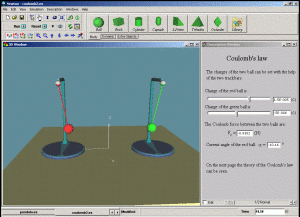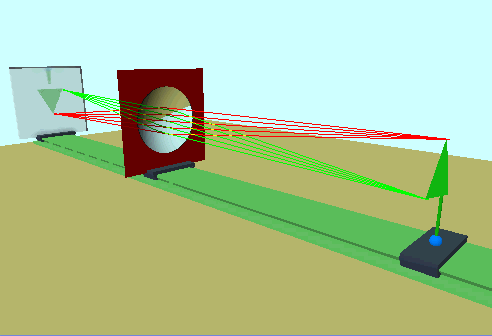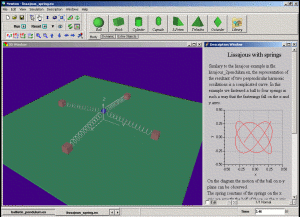|


The
virtual world of NEWTON v4
provides a completely new way of learning physics – the exploration of
simple machines, kinematics, dynamics, mechanisms, thermodynamics, electricity
and optics on a computer in 3D.
NEWTON is ruled by the simulated laws of physics, allowing you to
build, manipulate and investigate your experiments interactively, without the
limitations of physical models.

When creating an experiment
in Newton, you can select from a wide range of real world or abstract objects,
from the simplest geometrical bodies (brick, sphere, etc.), complex instruments
(stands, slope, car, etc.), and constraints (many types of joints and springs).
You can adjust their physical
parameters (mass, elasticity, friction, etc.); assign to them forces, torques
or velocity; and make relationships subject to constraints. You can add
virtually any object to Newton using a VRML editor; you may also export your
experiments in VRML format forces, torques
or velocity; and make relationships subject to constraints. You can add
virtually any object to Newton using a VRML editor; you may also export your
experiments in VRML format
With the example files included,
it's easy to get started. You can alter them and simulate again, and you will
see that it's quite simple to create amazing demonstrations. When running a
simulation, the bodies start moving, guided by the acting constraints; are
rotated by torques; and collide with each other as in a movie.
Actually, you can set up one or
more cameras and capture their views of the experiment, storing
 them in
an AVI file. You can also add descriptions to your examples, with explanatory
texts, images, and formulas. them in
an AVI file. You can also add descriptions to your examples, with explanatory
texts, images, and formulas.
Using diagrams, it’s easy to measure and evaluate the results of your experiments.
Several user-defined curves can be displayed on the same diagram, so it's easy
to compare the measured data with the results derived from theoretical
calculations. You may also change the units of the physical quantities.

Purchase and Download Full Version
MORE info |
|
Multimedia Lab for Exploring Mechanisms v2
|
NEWTON v2 Exploring Mechanisms provides a
unique new environment for learning mechanisms and mechanical systems. Select from the
wide range of 3D machine elements–axles, wheels, pulleys, gears, racks, levers, cams,
screws, transmission belts and more–to discover their working principles. Or study the
animated operation of mechanical systems from any viewpoint using Newton’s powerful 3D
engine. In addition, you can either assemble the mechanisms step by step or watch the
assembly process as an interactive movie. |